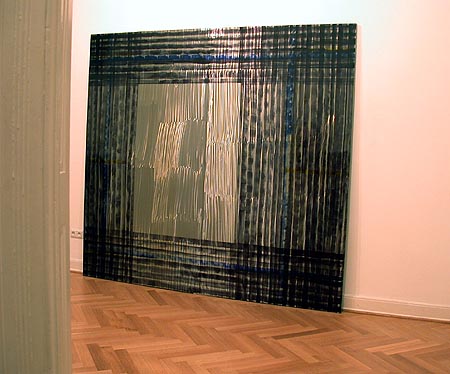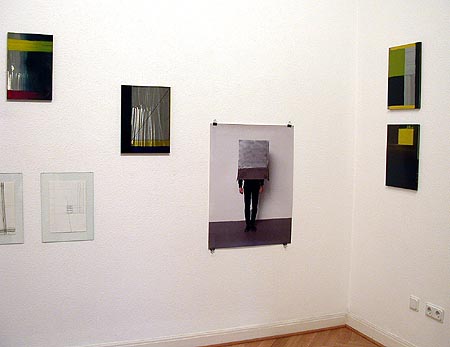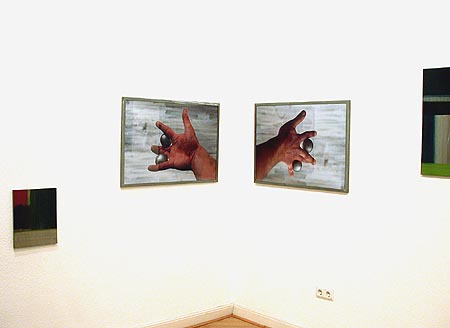Camill LEBERER
1953 born in Kenzingen/Breisgau,
Germany
1978-84 Studies of sculpture at Staatl. Akademie der Bildenden
Künste, Stuttgart, Germany
1984 Scholarship from the
Kunststiftung Baden-Württemberg, Germany
1984-86 Düsseldorf, Berlin
1985 Prize-winner of "Forum
Junger Kunst"
1987/88 Lecturer for sculpture at Fachhochschule für
Gestaltung Pforzheim, Germany
1988 Villa Massimo-Scholarship,
Rome, Italy
1991 Promotion award of the city of
Stuttgart, Germany
1991/92 Guest professor at the Staatl. Akademie der Bildenden
Künste, Stuttgart, Germany
2008 "Hofschneider-Price for
Contemporary Art, Baden Württembergische Kunststiftung
lives and works in Stuttgart, Germany
Exhibitions since 1984 (selection)
| Pfalzgalerie Kaiserslautern,
Germany Gallery Tilly Haderek, Stuttgart, Germany Gallery Marquardt, Munich, Germany Institut für Moderne Kunst, Schmidt-Bank, Nürnberg, Germany Gallery der Stadt Stuttgart, Germany Gallery Tilly Haderek, Stuttgart, Germany Kunstverein Braunschweig, Germany Museum Bonn (together with S.Bächli, N.Meyer), Germany |
| Städt. Galerie Göppingen, Germany |
| Galleria Lattuada, Mailand, Italy |
| Kunsthalle Baden-Baden, Germany |
| Folkwang-Museum, Essen, Germany |
| Kunstverein Freiburg, Germany Museum Het Valkhof, Nijmegen, NL |
|
Dom Museum,
Frankfurt, Germany Städt. Galerie Saulgau, Germany Museum Luxembourg |
| Museum Goch, Germany |
| Palais Liechtenstein, Feldkirch, Austria Gallery Erhard Witzel, Germany Galerie Mariette Haas, Ingolstadt, Germany Kunsthalle Karlsruhe, Germany |
|
Villa Zanders, Bergisch-Gladbach, Germany Sprengel Museum Hannover, Germany |
|
Museum Heidenheim,
Germany Pfalzgalerie Kaiserslautern, Germany Broadbent Gallery, London, GB |
| Galerie der Stadt Pforzheim / Kunstverein Pforzheim |
| Museum für Konkrete Kunst, Ingolstadt |
| Ihn
Gallery, Seoul, Korea Kunstmuseum, Stuttgart, Germany |
| Gallery Erhard Witzel, Germany |

| Camill Leberer works with
iron, glas and paint in both spatial sculpture and wall objects. With the larger
sculptures, somewhat container-like, he creates an "imaginary scene of action"
that signals at once proximity and distance, limitation and delimitation. The panes of
glas open the object into the room, while at the same time closing it off with the metal
surfaces. The yellow paint on portions of the glas provides the sculptures with a dynamic
atmosphere of light, which extends into the surroundings. The raw, sanded iron surfaces
also reflect the changing light and color-conditions of the surrounding space. With his wall objects Leberer demonstrates the relationship between sculpture and painting - and simultaneously multidimensionality. Leberer also experiments with this approach to two dimensionality in his new enamel paintings. With clearly outlined painted sections and raw sanded iron surfaces, he transfers a detail of sculpture into a painting, born entirely out of sculptural understanding, creating and recreating itself in the moment of perception, depending on the vantage point from which it is seen and the angle at which the light falls. In contrast to earlier sculptures and paintings recalling associations to organic forms, today a more universal abstract form repertoire is divulged and a pictorial language that denies any functional or contextual relationships. Nonetheless, it is apparent that his works are set in an area between reflection and instinctive intuition that is difficult to interpret from only rational perspectives. Camill Leberer’s work is in the collections of (I can’t believe it’s permanently displayed…) the Kunstmuseum Bonn, Galerie der Stadt Stuttgart, Kunsthalle Mannheim, Staatsgalerie Stuttgart, Museum für Moderne Kunst Wien, Kunstsammlung der Bundesrepublik Deutschland and other public and private collections. |


